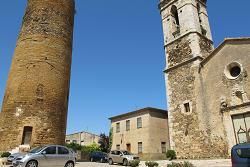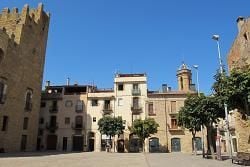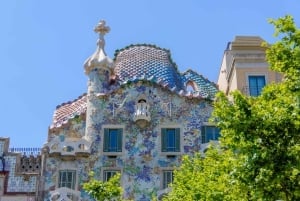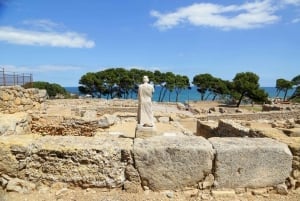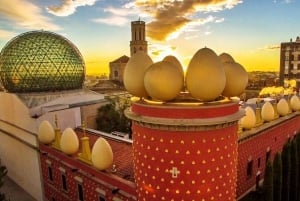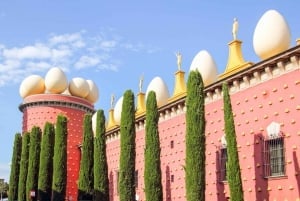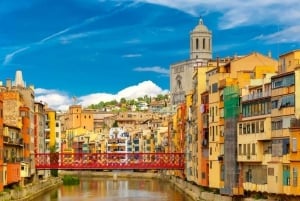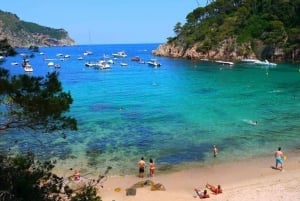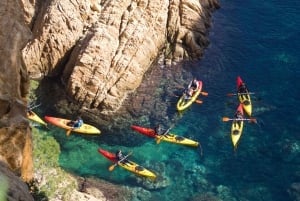La Bisbal d'Empordà
La Bisbal, the capital of the Baix Empordà region, changed its Roman name of "Fontanetum" to the current name at the beginning of the 11th century when it was handed over to the "Bisbe" (bishop in Catalan) of Girona.
A stroll through its narrow streets brings you to the handsome town centre housing a Romanesque Castle, originally built for the bishops of Girona and showing gothic and renaissance additions, which is located right next to the weapons square, now known as the "Plaça Major" (main square).
The main sources of income for La Bisbal were originally agriculture and livestock, with the cork industry gaining great importance at the beginning of the 20th century. Nowadays the town’s main income derives from tourism, but it is also known for its pottery and ceramics industry dating back from the Middle Ages, a tradition which has been passed from generation to generation.
The urban landscape is silhouetted by the old chimneys, an important legacy of its past. It has even been proven that pottery and ceramics from La Bisbal were sold on the markets of the main towns of Catalonia from the 18th century.
Nowadays pottery shops line the main road through the town where you can browse for some original local pieces. All in all, La Bisbal is a pleasant place to stop as, in addition to its castle, it retains many impressive mansions and the architectural remains of a once bustling Jewish quarter.
To attractions in La Bisbal d’Empordà:
- Terracota Museum
- Castle-Palace
- Santa María Church
- Jewish quarter
- "Les Voltes"; houses with arches from the 14th century
- The old bridge
- The convent
- Church of the "Pietat"
Special dates to consider when visiting La Bisbal d’Empordà:
- Street market; 1st May
- Street circus fair; 18th to 20th July
- "Festa Major"; 14th to 18th August
Local market; every Friday
And more information in .... La Bisbal d’Empordà
The surrounding countryside of La Bisbal d’Empordà is well worth a visit and easily accessible.
Vulpellac boasts an attractive gothic-renaissance castle which, although privately owned, is well worth viewing from the outside.
"Festa Major" in Vulpellac; 20th and 21st August
Ullastret, the most important Iberian settlement existing in Catalonia 2500 years ago. Archaeological findings can be seen at the museum and the ruins lay a little way outside the village.
The beautiful medieval town of Peratallada boasts many outstanding buildings, with the town being declared a historical and artistic monument in 1975. It cannot be accessed by car and has therefore retained its medieval atmosphere over the centuries. An evening stroll is the best time to see the sun set over the town ramparts with their three towers, the "plaça major" with arches and the castle.
"Festa Major" in Peratallada; 6th and 7th August
The quiet villages of Cruïlles, Monells and Sant Sadurní de l’Heura are located no more than two kilometres from La Bisbal and they are well worth a visit due to their interesting Romanesque architecture. A stroll through their cobbled streets to observe the houses with arches is a must.
"Festa Major" in Cruïlles; 14th May
"Festa Major" in Monells; 25th August
"Festa Major" in Sant Sadurní de l’Heura; 19th September
You cannot leave the area without having visited the medieval Gala Dalí castle in Púbol, where the artist Salvador Dalí spent the last years of his life with his wife Gala. This is definitely an essential stop on the Dalí route which passes through Cadaqués and his birthplace Figueres.


